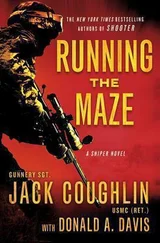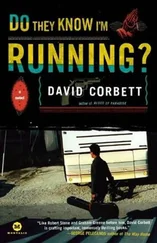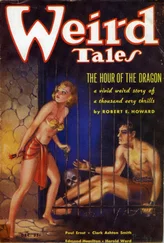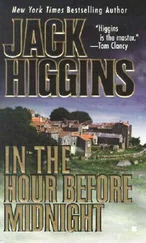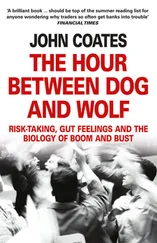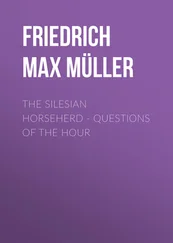
The next day I follow a different track. At daybreak I ride the métro to visit 28 rue Pigalle, the address of the dealer Moisse where Broginart bought Eleanor’s paints. The building now houses a small grocery store. I cross the boulevard de Clichy and wander around Montmartre, but all the artists have been gone for decades, replaced by hordes of summer tourists. I take the métro back to the Left Bank. At the Magasin Sennelier on the Quai Voltaire the clerk has never heard of Moisse, but he directs me to another shop on the rue Soufflot where the old man behind the counter squints at the receipt and frowns.
— Moisse. Very famous couleurs . They’ve been gone a long time.
— Were they good paints?
The man shrugs. — I never saw them. But they were supposed to be very good. Moisse started at the Maison Édouard, and they mixed the best colors in Paris. Manet used them, Caillebotte, everyone—
— Would they be worth buying from overseas?
— Comment?
— Were they good enough to order from another country?
— Of course. Once a painter has his colors, he doesn’t want to use different ones.
I thank the man, walking out the door. The bell chimes behind me. Suddenly I turn around and walk back in.
— Have you heard of a collector named Broginart?
— Qui?
— Broginart.
The man shakes his head.
— Non .
I start west along the quai toward the Bibliothèque Nationale. It’s a long walk but I need time to think. There must be a thread I still haven’t followed, a piece of evidence that could unravel everything if I tugged hard enough. But which piece of evidence?
When I get to the library my research flits from topic to topic. I read about pigments and linseed oil, the grinding of colors and manufacture of tube paint in France; I flip through the catalog from the 1920 Salon des Indépendants. But I feel like I’m circling my goal instead of getting closer. So I study the catalogs of Paris museums and galleries, searching for collections of early twentieth-century paintings. Some of the smaller museums may not have listed their collections online. I call up a stack of catalogs and flip through the indices one by one. Then I see the name. GRAFTON , Eleanor… 39
I turn to page 39. The entry is brief.
GRAFTON, Eleanor
The Unvanquished (Étude de femme nue), vers 1917. Huile sur toile. 733 x 1000. Don de Henri Broginart
The front page of the catalog says Musée Konarski: Catalogue sommaire des collections. I skim the introduction. The museum is housed in the former home of Ludwik Konarski, a poet from Warsaw who migrated to Paris in 1909. Konarski befriended many painters at La Ruche, an artists’ residence in the Passage de Dantzig where Konarski bought the paintings that would be the cornerstone of his collection.
The catalog doesn’t list the museum’s phone number, only its address: 54, rue de Monceau 75008 Paris . I copy it down and walk quickly out of the library, trying not to run.

The Musée Konarski lies on the one-way rue de Monceau south of the Parc Monceau, the small white building set back from the street by a courtyard with a locust tree. When I open the door the woman behind the front counter stands up in surprise.
— Monsieur, the museum closes in fifteen minutes.
I explain that I’m not here to visit the museum.
— I came to see if you have a painting I saw in your Catalogue sommaire . It’s by an artist named Eleanor Grafton.
The woman frowns. — I don’t know—
— It was donated by a collector named Broginart.
— Ah, Broginart. We have most of his collection. Let me look.
The woman sits down and I help her spell out Grafton letter by letter into her computer. She makes a few clicks with her mouse.
— Étude de femme nue , 1917. Yes, it’s in our storage.
— It’s not here?
The woman shakes her head.
— We have a small museum, but quite a large collection. Most of it rarely gets displayed.
— Do you have a picture of it?
— Bien sûr. It must be in one of the books—
The woman looks through the books on the shelf behind her, making a clucking noise as she closes each volume. She goes into a back room and comes out with a large black paperback in her hands, smiling triumphantly. She sets the dog-eared book in front of me, the pages already parted to show the picture.
— Voilà .
The image is captioned:
Eleanor GRAFTON(1891–1969) Cat. 537
The Unvanquished (Étude de femme nue), vers 1917.
Huile sur toile
H. 0.73; L. 1.
Don de Henri Broginart
The painting is a series of geometric slabs, the flat plane of the picture broken into shards of varying color — cold grays and blues receding into the background, warmer earth tones surging out. It takes me a moment to make out the subject. A woman standing with one leg forward, a blue cloak draped over one shoulder, the rest of her nude body sculpted in prisms of ochre and sienna. Her face is visible both straight ahead and in profile, the bold line of her nose dividing the two perspectives.
But the face could be anyone. It is only an arrangement of brown and blue planes with a dark triangle where the cheek should be, and a few lines to suggest the brow and jaw and chin. The woman’s hair is modeled in two shards of copper. In one hand she holds a yellow object, thin and narrow, but the form is so simple that it could be anything from a stick to a scepter. Below the picture there is a commentary in French.
A painting by the British artist Eleanor Grafton. Daughter of the sculptress Vivian Soames-Andersson, Grafton was trained at the Slade School of Art in London under the direction of Henry Tonks, and was known as a painter of competent — if unambitious — portraits and landscapes. Grafton was a slow convert to modernist experimentation; she mistrusted the abstract, machine-driven ethos of Futurism and Vorticism developing in prewar London. But in the years preceding 1914 Grafton repeatedly visited Paris and is known to have taken a deep interest in the works presented at the Salon de la Section d’Or, some of which approached Cubism or Orphism with a harmonious palette and classical proportions based on mathematical principles. The experiment was difficult for Grafton, who destroyed preparatory studies in 1914 and again in 1916 before completing this final work. Never entirely satisfied with the result, Grafton abandoned the Cubist method and never returned to it again.
I push the book back across the counter. The librarian looks at me.
— It’s not the right painting?
— No. I mean, yes it is.
— Do you want a copy of the image?
The woman takes the book into a back room and comes back with a photocopy of the page. I thank her and put it in my bag, walking out of the museum without knowing where I’m going.
It couldn’t have been simpler. The picture was started long before Imogen would have been pregnant and the studies were destroyed for the most ordinary reason of all. They weren’t very good. Neither was the final picture. It’d been hard to find because it wasn’t worth displaying. Maybe Broginart wanted the earlier study because it was better, or because he collected modern paintings and thought Eleanor’s experiment might eventually pay off.
I’d been crazy to follow the painting. The letters in Sweden made me think I could find anything, but that had only been dumb luck. Then I’d tricked myself into believing I could solve everything with one piece of evidence. A painting. Of all the things in this world.
Читать дальше


